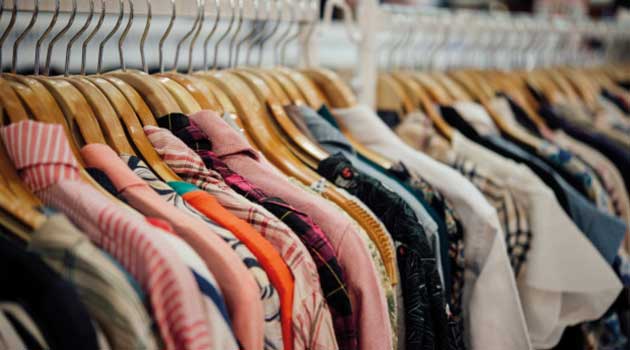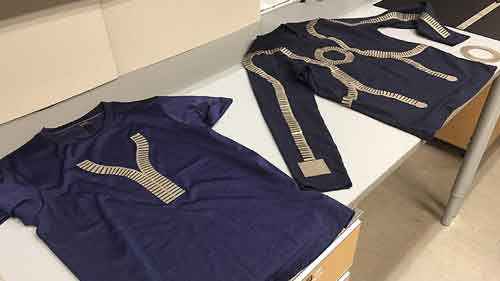Garth Theunissen, Business Insider SA
- After years of relying on Chinese imports, large South African clothing retailers are starting to source and manufacture more of their products locally.
- This enables them to respond faster to local fashion and weather trends.
- Sourcing SA-made summer clothes is easier than getting winter clothing, however.
South African clothing retailers are reconsidering their love affair with cheap Chinese imports in favour of locally manufactured apparel.
And while the disruption to international supply chains due to Covid-19 has emphasised the need to reduce reliance on Asian imports, the pandemic is not the sole reason behind the renewed interest in domestic production.
“It’s been building for a while as local manufacturing allows clothing retailers to respond much quicker to changing fashion styles or customer preferences,” says Brian Thomas, a portfolio manager at Laurium Capital. “It allows them to very quickly increase the production of a particular item and get it onto shelves in a matter of weeks, whereas it can take northwards of two months before a shipment from Asia ends up on South African shelves.”
The Foschini Group (TFG), one of South Africa’s biggest dedicated clothing retailers, is leading the way with local manufacturing and has made it a strategic imperative to reduce its reliance on single-source suppliers like China. TFG Africa now sources 35% of its clothing procurement from South Africa, whereas five years ago as much as 80% of its apparel items were imported from Asia.
“We can actually be more profitable as a retailer with locally manufactured goods than with imported goods,” TFG’s CEO Anthony Thunström told a media roundtable at the end of last month. “Local allows us to calibrate stock into our system with a much shorter lead time than we ever were able to in the past”.
TFG has been investing in “quick-response” local manufacturing capacity for the last seven years – i.e. their factories respond to sales by boosting production of items that are selling fastest.
This has enabled it to reduce its average lead time to produce a garment to just 42 days, whereas international supply chains typically average between 150 and 180 days.
These T-shirts – sold at The Foschini Group’s clothing retailer The Fix – were delivered within 37 days of the first concept, after it was designed locally and manufactured at TFG’s factory in Caledon.
With quick response manufacturing TFG can move a garment from production to being on the shelf in six weeks, allowing it to respond fast to new fashion and weather trends.
TFG’s factories in Maitland and Caledon in the Western Cape are currently running at 100% capacity and the group is looking at expanding the facilities over the next five years. That’s particularly important considering that 73% of its local production capacity is quick response.
Nevertheless, Thunström acknowledges that the advantages of local manufacturing do not apply to everything and are heavily reliant on economies of scale, fabric availability and the requisite skills needed to produce a particular product. For example, it is far easier to produce summer garments in South Africa than winter clothing which requires heavier fabrics and skills that are not yet readily available. But Thunström says these winter clothing skills will be developed in time.
Truworths
Truworths is another clothing retailer putting its faith in local manufacturing.
“We have always favoured local manufacture because it enables ‘quick response’ and ‘fast fashion’ – and Truworths is a fast-fashion business,” says Truworths CEO Michael Mark. “Our percentage of local textile to total textile purchases has now reached 45%. We anticipate this percentage will increase to around 50% over the next few years.”
Truworths recently concluded the purchase of Barrie Cline Clothing, a design house that has exclusively supplied the group for more than 20 years. A design house designs garments and orders fabrics and trims and then arranges for manufacture with local factories.
“Our local supply chain model is pivoted around our own design house and a few select design houses like Barrie Cline in which we are a dominant or the only customer,” says Mark. “Barrie Cline as the largest of these was an obvious acquisition for us.”
But there are challenges to local manufacturing such as an ageing skills base, an unstable power supply and rising electricity costs. Local manufacturing also doesn’t escape rand volatility as a sizeable portion of fabrics must still be imported.
“Manufacturing for South Africa is not for sissies,” says Thunström.
Mr Price
Even Mr Price, which caters to more price-sensitive, lower-income consumers than TFG and Truworths, is increasing its local content. Mr Price now sources 35% of total merchandise units from South Africa, which is worth about R9.2 billion in retail sales. That’s up from about 31% in 2015, which at the time totalled R3 billion in retail sales.
While China still represents 48.5% of Mr Price’s order book, the group is refocusing its energy on the South African market, which accounts for 92% of its revenue. It has exited Australia and Poland and is reducing its reliance on Chinese imports by exploring production in other African countries, which together with South Africa account for about 45.7% of its merchandise inputs.
Mr Price has also committed to procuring 1,357 tons of cotton from local producers via its membership of the South Africa Cotton Cluster (SACC). According to Mr Price the local cotton industry has boosted its output by 775% over the past seven years.
“We are totally committed to supporting more local manufacturing and the shift to local production in our order book is evidence of this,” says Matthew Warriner, Mr Price’s head of investor relations. “We are working closely with government, through the Retail-CTFL Master Plan 2030, and have identified a high level of volume that can be committed to local sourcing.”
The Retail-CTFL Master Plan 2030 is a commitment signed by the clothing retailers, labour and government in November last year, which will see them boost locally-produced goods to 65% of overall apparel items by 2030, from about 44% at present.

Game, Woolworths and Pep
Even Game, a retailer not typically associated with apparel, re-entered the affordable clothing market after 14 years with the launch of its Stylessentials clothing line in August this year.
“While 90% of the range is sourced from local suppliers, about 25% of the range is locally manufactured,” says Andrew Stein, VP for Game. “We would like to increase the percentage of locally-manufactured items as we progress with this offering, to ensure that we play our role in the support of local small businesses.”
Woolworths is also striving ahead to source more apparel locally with over 50% of its purchases coming from the SADC region. This reduces shipping time and provides some protection against currency volatility.
Pick n Pay Clothing has also announced a series of collaborations with South African fashion designers such as Gavin Rajah, Julia Buchanan and Katekani Moreku in an effort to make locally produced styles more accessible. These local designs are available at selected Pick n Pay stores as well as its online platform www.picknpayclothing.co.za.
Pep Clothing (PepClo), a division of Pepkor, has four local factory divisions manufacturing basic school clothing, knitted underwear and flip flops.
The unit produces 15 million items annually and has recently also started making personal protective equipment (PPE) with ambitions to produce 500 000 disposable gowns over the next financial year. PepClo, which currently employs 2,000 people, will also expand to produce coveralls from February 2021 once new waterproofing machinery has been installed at its Cape Town factory.
Source: www.BusinessInsider.co.za























